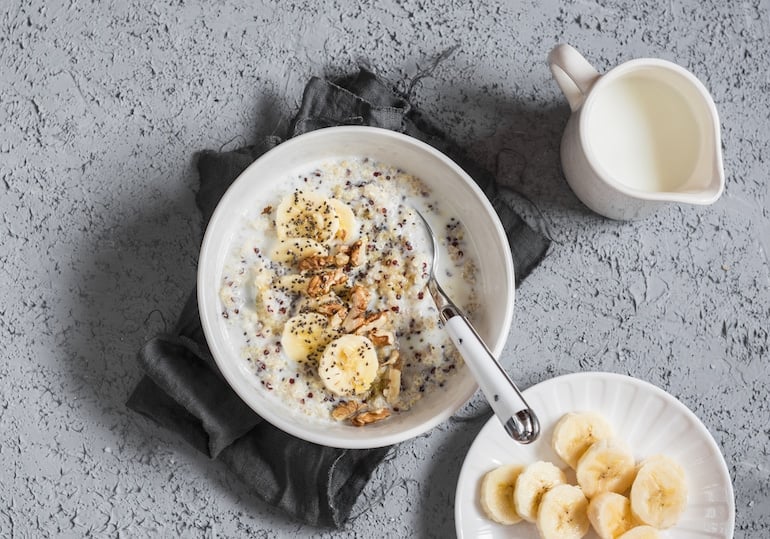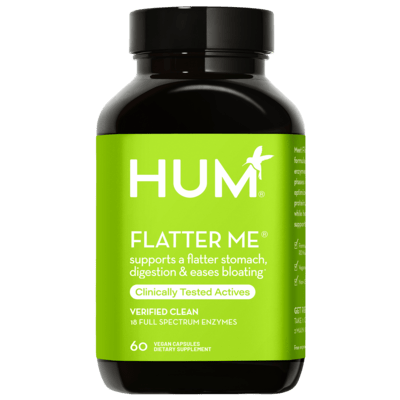Soluble vs. insoluble fiber: What’s the difference, and what are their benefits? Dietitians share the ins and outs of this all-important nutrient that too many of us lack.
Most of us don’t get too worked up about fiber. That’s probably because we’ve heard over and over again that there are many benefits of soluble fiber and it’s an essential nutrient in any healthy diet. It’s true: Getting enough fiber can help control blood sugar levels, can aid in lowering cholesterol levels, and keeps your digestion moving along. It’s also one of the top nutrients experts recommended for maintaining a healthy weight.
But what many people don’t know about fiber is that it plays a crucial role in the body’s natural detoxification process. In particular, soluble fiber is a must-have if you want to support your body’s ability to detox.
What is detoxification?
Detoxification is the process our body uses to transform toxins so they can be eliminated from our bodies, explains Sarah Rueven, RDN, CDN, and founder of Rooted Wellness.
Toxins come from two main sources. Some toxins like urea, lactic acid, and waste products produced by our gut microbiome, are created in the body during our everyday activities like digestion and metabolism. The second source? “Toxins can also come from substances that we ingest, absorb, or inhale such as mercury, pollution, drugs, and alcohol,” Rueven explains. We can come into contact with toxins that the body recognizes as needing to be eliminated when we use certain types of beauty products, eat certain foods, and even when we take some medications.

Before you get freaked out, the good news is that our bodies detox themselves all day long. The human body is very well-equipped with detoxification pathways, which are found in the liver, kidneys, GI tract, and skin, according to Rueven. In particular, the liver and kidneys do a lot of the heavy lifting. The liver excretes toxins into bile, which is then eliminated through your stool. The kidneys do a similar job and help filter toxins that will be excreted in your urine.
If you’re wondering where soluble fiber comes in—we’re getting there. The best way to support your body’s ability to detox is through diet and lifestyle. But this doesn’t require a flashy days’ long detox or cleanse you might have seen advertised online, notes Erin Kenney, a registered dietitian and founder of Nutrition Rewired. “You don’t need a restrictive diet, juice cleanse, or expensive kit to detox. Detoxification is an everyday, slow, and gentle process that can be supported through a healthy diet, clean drinking water, movement, and a reduction in toxin exposure.” Turns out, one major component of a healthy diet to support your body’s detoxification systems is, you guessed it, soluble fiber.
Soluble vs. insoluble fiber: What’s the difference?
There are two main types of fiber: soluble fiber and insoluble fiber. The key difference between the two is how they interact with water.
What is insoluble fiber?
Insoluble fiber doesn’t dissolve in water. “Insoluble fiber prevents constipation by absorbing water in the GI tract, bulking stools, and speeding up transit time in the GI tract,” Rueven says.
What is soluble fiber?
Soluble fiber does dissolve in water. “As it dissolves, it forms a gel-like consistency which slows digestion and the absorption of certain nutrients,” Rueven notes. Soluble fiber is a true multitasker. It feeds the good bacteria in the gut, lowers cholesterol by blocking absorption of dietary cholesterol, and slows digestion of carbohydrates, which helps keep blood sugar stable.

3 benefits of soluble fiber
There are actually several ways soluble fiber aids in detox and helps us get rid of toxins. Here are just a few of the many benefits of soluble fiber.
1. It supports a healthy gut
First, because it feeds the good bacteria in the gut, soluble fiber benefits a healthy gut microbiome. According to Rueven, this influences many other organs within our bodies, including the detox heavyweights: the liver and kidneys. “The healthy bacteria in our gut protect gut barrier function and increase immunity within the GI tract,” Rueven explains. “This protects the liver and kidneys from bacteria and inflammation, and allows these organs to perform their detoxification functions optimally.”
Plus, your gut supplies blood to the liver and kidneys, so both of these organs are directly affected by the health of the gut microbiome, Rueven points out.
2. It Boosts antioxidant activity
Soluble fiber also helps increase the activity of antioxidants to reduce your kidneys’ burden of processing nitrogen, a common substance your body needs to get rid of, explains Abby Vichill, a registered dietitian and founder of FWDfuel. “It’s also involved in the production and flow of bile.” We need bile to absorb fat-soluble vitamins, and as mentioned earlier, it helps carry toxins and waste products out of the body.
3. It helps with hormonal balance
Fiber also plays a role in helping your body detoxify excess hormones. In particular, there’s a clear link between fiber and estrogen. “Much of our body’s estrogen is metabolized in the gut. A diet low in fiber can cause estrogen levels to be higher, as fiber helps to clear excess estrogen out of the body,” Vichill says. Both females and males can have excess estrogen, which is sometimes called estrogen dominance. In females, it often happens in midlife and in women with polycystic ovary syndrome (PCOS), and it can cause symptoms like bloating, irregular menstrual cycles, and breast tenderness. In men, higher-than-normal levels of estrogen are associated with fertility issues and erectile dysfunction.
So how does it work? Fiber helps clear excess estrogen by reducing the amount that’s absorbed in the colon. When it comes to soluble fiber in particular it helps us feel fuller longer because it slows digestion, Rueven says. For this reason, diets high in fiber are linked to healthy weight maintenance. Fat cells produce estrogen, so maintaining a healthy weight can help to lower excess estrogen levels.
Foods high in soluble fiber
If you’re looking to include more soluble fiber foods in your diet, you have lots of options to choose from.
Rueven and Vichill’s top soluble fiber food picks include:
- Oats
- Citrus fruits
- Bananas
- Apples
- Carrots
- Brussels sprouts
- Dried beans
- Flax and chia seeds
- Avocados
- Potatoes and sweet potatoes
- Dried fruits like figs and apricots
- Psyllium husk (which is often found in fiber supplements)

As beneficial as fiber is, there are some specific things to keep in mind when you’re hoping to increase your soluble fiber intake.
Start slow
“If you’re currently not eating many fiber-rich foods in your diet, it’s important to gradually increase your intake of fiber,” Rueven says. “Eating too much fiber before your body has gotten used to it can cause uncomfortable digestive symptoms.” (A digestive enzyme blend like HUM’s Flatter Me, which contains four specific enzymes to help with fiber digestion, may help you ease the transition.)
Stay hydrated
According to Rueven, any time you increase your fiber intake, you also want to up your water intake. This helps your digestive tract process the fiber and means you’re less likely to get backed up, bloated, and gassy.
Don’t stress about including specific foods
“Rather than focusing on individual foods, aim to eat a varied diet centered around plant-based foods like fruits, vegetables, whole grains, legumes, and nuts and seeds,” Rueven advises. “These foods are all good sources of fiber and contain a mixture of both soluble and insoluble fiber, both of which our bodies need to thrive and support detoxification and overall health.”









